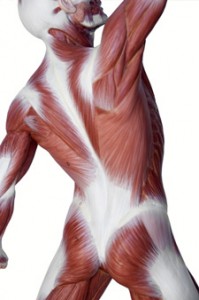
What is it?
Dynamic mobility is a great warm up before training. Although there is a bit of semantic confusion in the phraseology, I am referring to “mobility” as contracting your muscles and taking your joints through their ranges of motion actively, as opposed to passively.
What does it do?
- Increase flexibility
- Prevent injury
- Enhance performance
- Make the most out of your exercises
How does it work?
More and more research has been showing that static stretching before workouts is not the optimal time to do this. When you, say, lay on your back and stay in a stretch for a minute or more, then switch positions and lay down some more and hold it for another minute, and so forth…do you think your nervous system is firing up? Actually, the opposite occurs, and the signal between your muscles and your nervous system weakens, which can result in reduced strength and power output, and less coordination within your body, which can lead to injuries!
When you warm up by actively moving your joints and muscles through their ranges of motion, you are stimulating your nervous system and enhancing the signal between it and the muscles. This leads to an increased power and strength output, greater joint range of motion, and a much more efficient performance. You also get the synovial fluid (fluid in your joints that helps cushions and lubricate) going in your joints, greatly reducing joint friction. Now your body is warm and your joints are ready for exercise!
AFTER working out then, you can perform your static stretching, and by doing so, you will relax your system and prime your body for recovery.
What do I do?
Begin with about 5-7 minutes of continuous moving activity to raise body temperature, increase blood flow to your muscles, and activate your nervous system. Any sort of cardio will do, such as biking, a light jog, or elliptical. Once you have completed your light cardio, continue with dynamic mobility, then your workout (e.g. resistance training), then do static stretching.
Even if you are just doing “legs” you still need to work on TOTAL BODY mobility. Question: If you pull one section of a spider web, does the whole rest of it remain intact? No! The whole thing will shift. This is the same in your body, due to your fascia, which is an amazing three-dimensional soft-tissue network in your body. If your shoulder girdle is tight, for example, you will not generate the same fluid arm swing you need in running, and this has ripple-down effect to your hips, knees, and ankles. Therefore, understand that tightness in one section of the chain can impact a body part much further away (e.g. arch of the foot can impact the back!) SO, work on total body mobility and watch the positive cumulative effect unfold after a few weeks.
SAMPLE DYNAMIC MOBILITY PROGRAM
Perform each exercise for 6 -10 reps each, in a smooth, continuous manner. Start with smaller and slower ranges of motion and progress over time in amplitude and speed. Note that anatomical distinctions (below) are loose.
Upper Body:
- Arm swings
- Overhead/down and back
- Side/front crossover
- Forearm stretch
- Wall slides
Neck:
- Flexion/extension
- Lateral flexion
- Rotation (look R, L)
Trunk and Shoulder Girdle:
- Flexion/extension
- Lateral flexion
- Rotation (hands up, elbows out)
- Inchworm
- Knees to Chest
- SL RDL
- Bird Dog
Lower Body:
- Hip circles
- Hip twists
- Leg Swings
- Flexion/extension
- Cross body flexion/abduction
- Frankensteins
- Quad stretch
- Sumo Squat to Stand
- Reverse Lunge to Twist
- Spiderman
- Scorpion
- Ankle Bounce
- Double leg
- Single leg
I hope to post some video soon. For now, I hope you appreciate the message that we need optimal length-tension relationships in our entire kinetic chain to build our athletic base and prevent injuries. Please feel free to comment or email me if you have any thoughts or questions 🙂
FEB

